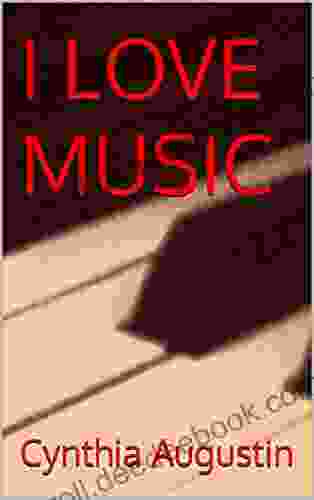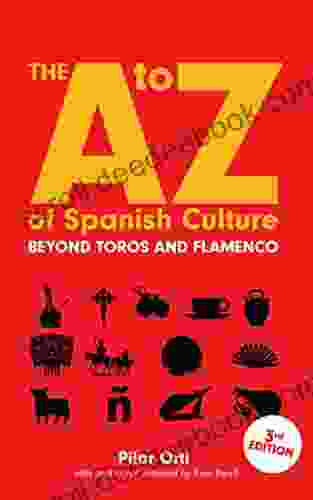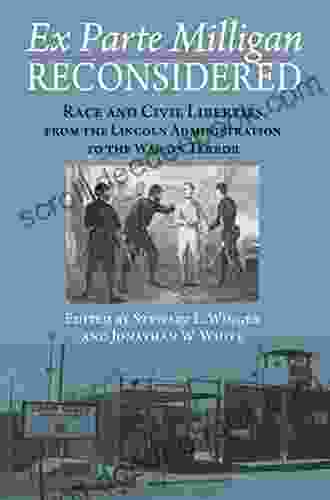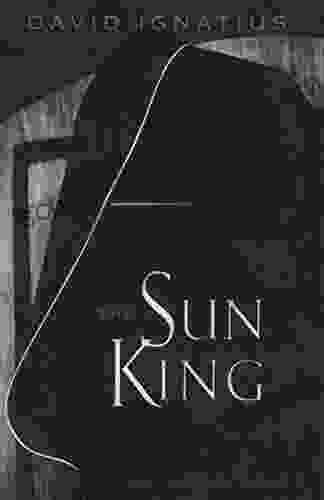Concertos and Choral Works: A Comprehensive Guide to Their History, Forms, and Impact on Western Classical Music

5 out of 5
| Language | : | English |
| File size | : | 44342 KB |
| Text-to-Speech | : | Enabled |
| Screen Reader | : | Supported |
| Enhanced typesetting | : | Enabled |
| Word Wise | : | Enabled |
| Print length | : | 449 pages |
| Lending | : | Enabled |
Concertos and choral works are two of the most important and enduring genres in Western classical music. They offer composers a unique opportunity to explore musical forms and textures, and have been used to create some of the most iconic and beloved pieces in the repertoire. In this article, we will delve into the history, forms, and impact of concertos and choral works. We will also provide a guide to some of the most famous and influential works in each genre.
Concertos
A concerto is a musical composition for a solo instrument or group of instruments accompanied by an orchestra. The term "concerto" comes from the Italian word "concertare," which means "to agree or perform together." Concertos are typically written in three movements, with the first movement being fast and energetic, the second movement being slow and lyrical, and the third movement being fast and lively.
The earliest concertos were written in the Baroque period (1600-1750). These concertos were typically written for a single solo instrument, such as the violin, harpsichord, or organ. The orchestra typically played a supporting role, providing accompaniment and rhythmic support.
In the Classical period (1750-1820),the concerto form became more standardized. Concertos were typically written for a single solo instrument, with the orchestra playing a more prominent role. The first movement of a Classical concerto was often written in sonata form, with a clear exposition, development, and recapitulation. The second movement was often written in a slow tempo, such as an andante or adagio. The third movement was often written in a fast tempo, such as an allegro or presto.
In the Romantic period (1820-1900),the concerto form became even more elaborate. Concertos were often written for multiple solo instruments, and the orchestra played an even more important role. The first movement of a Romantic concerto was often written in a free form, with no clear exposition, development, or recapitulation. The second movement was often written in a slow tempo, such as an andante or adagio. The third movement was often written in a fast tempo, such as an allegro or presto.
In the 20th century, the concerto form continued to evolve. Some composers, such as Igor Stravinsky and Arnold Schoenberg, wrote concertos that were atonal or dissonant. Other composers, such as Béla Bartók and Aaron Copland, wrote concertos that incorporated elements of folk music and jazz.
Today, the concerto remains a popular genre for composers. Concertos are written for a wide variety of instruments, including the violin, piano, cello, flute, and guitar. Composers continue to explore new and innovative ways to use the concerto form.
Choral Works
A choral work is a musical composition for a choir of singers. Choral works can be written for a variety of different vocal combinations, including SATB (soprano, alto, tenor, and bass),SSA (soprano, alto, and alto),and TTBB (tenor, tenor, bass, and bass). Choral works can be written in a variety of different styles, from sacred to secular, and from a cappella to accompanied.
The earliest choral works were written in the Middle Ages (500-1400). These choral works were typically written for liturgical use, such as masses and motets. The Renaissance (1400-1600) saw the development of a more secular choral music, including madrigals and chansons.
In the Baroque period (1600-1750),choral works became more elaborate and complex. Composers such as Johann Sebastian Bach and George Frederick Handel wrote choral works that were both technically demanding and emotionally expressive.
In the Classical period (1750-1820),choral works became more standardized. Composers such as Wolfgang Amadeus Mozart and Joseph Haydn wrote choral works that were often light and graceful.
In the Romantic period (1820-1900),choral works became more dramatic and expressive. Composers such as Ludwig van Beethoven and Johannes Brahms wrote choral works that were often inspired by literary and historical sources.
In the 20th century, choral works continued to evolve. Some composers, such as Igor Stravinsky and Arnold Schoenberg, wrote choral works that were atonal or dissonant. Other composers, such as Béla Bartók and Aaron Copland, wrote choral works that incorporated elements of folk music and jazz.
Today, choral works remain a popular genre for composers. Choral works are written for a wide variety of different vocal combinations, and in a variety of different styles. Composers continue to explore new and innovative ways to use the choral form.
Impact on Western Classical Music
Concertos and choral works have had a profound impact on Western classical music. They have helped to shape the development of musical forms and textures, and have been used to create some of the most iconic and beloved pieces in the repertoire.
Concertos have been used to showcase the virtuosity of soloists, and have helped to develop new techniques for playing instruments. Choral works have been used to express a wide range of emotions, from joy to sorrow, and have been used to tell stories and create dramas.
Concertos and choral works have also been used to promote social and political change. For example, Beethoven's Ninth Symphony includes a setting of Friedrich Schiller's poem "Ode to Joy," which has become a symbol of unity and brotherhood.
Today, concertos and choral works continue to be performed and enjoyed by audiences around the world. They are a testament to the power of music to move, inspire, and entertain.
Guide to Famous and Influential Concertos and Choral Works
Here is a guide to some of the most famous and influential concertos and choral works in Western classical music:
Concertos
* Violin Concerto in E minor by Niccolò Paganini * Piano Concerto No. 5 in E-flat major by Ludwig van Beethoven * Cello Concerto No. 1 in A minor by Robert Schumann * Violin Concerto in D major by Johannes Brahms * Piano Concerto No. 1 in B-flat minor by Tchaikovsky
Choral Works
* Mass in B minor by Johann Sebastian Bach * Messiah by George Frederick Handel * Requiem by Wolfgang Amadeus Mozart * The Creation by Joseph Haydn * Symphony No. 9 by Ludwig van Beethoven
These are just a few of the many famous and influential concertos and choral works in Western classical music. These works have helped to shape the development of music and continue to be performed and enjoyed by audiences around the world.
Concertos and choral works are two of the most important and enduring genres in Western classical music. They offer composers a unique opportunity to explore musical forms and textures, and have been used to create some of the most iconic and beloved pieces in the repertoire. In this article, we have delved into the history, forms, and impact of concertos and choral works. We have also provided a guide to some of the most famous and influential works in each genre. We hope that this article has given you a greater appreciation for the power and beauty of concertos and choral works.
5 out of 5
| Language | : | English |
| File size | : | 44342 KB |
| Text-to-Speech | : | Enabled |
| Screen Reader | : | Supported |
| Enhanced typesetting | : | Enabled |
| Word Wise | : | Enabled |
| Print length | : | 449 pages |
| Lending | : | Enabled |
Do you want to contribute by writing guest posts on this blog?
Please contact us and send us a resume of previous articles that you have written.
 Book
Book Genre
Genre Reader
Reader Library
Library Paperback
Paperback Newspaper
Newspaper Sentence
Sentence Shelf
Shelf Bibliography
Bibliography Annotation
Annotation Footnote
Footnote Scroll
Scroll Codex
Codex Tome
Tome Narrative
Narrative Biography
Biography Autobiography
Autobiography Reference
Reference Dictionary
Dictionary Thesaurus
Thesaurus Narrator
Narrator Resolution
Resolution Catalog
Catalog Card Catalog
Card Catalog Borrowing
Borrowing Periodicals
Periodicals Research
Research Lending
Lending Academic
Academic Journals
Journals Special Collections
Special Collections Interlibrary
Interlibrary Study Group
Study Group Dissertation
Dissertation Storytelling
Storytelling Awards
Awards Reading List
Reading List Book Club
Book Club Theory
Theory Textbooks
Textbooks Cezar Abreu
Cezar Abreu Liz Cassidy
Liz Cassidy John R Hollingsworth
John R Hollingsworth David James
David James Greg Witt
Greg Witt Carrie Callaghan
Carrie Callaghan Edward Rutherfurd
Edward Rutherfurd Brad Gustafson
Brad Gustafson Betty G Birney
Betty G Birney Christian Goeschel
Christian Goeschel Jean Patrick Marcq
Jean Patrick Marcq Barnaby Taylor
Barnaby Taylor Riccardo Illy
Riccardo Illy Brendan Mcnamara
Brendan Mcnamara David Ignatius
David Ignatius Kathy Reichs
Kathy Reichs Amy Gaines
Amy Gaines Dejan Kosutic
Dejan Kosutic Eric Rebentisch
Eric Rebentisch David J Garrow
David J Garrow
Light bulbAdvertise smarter! Our strategic ad space ensures maximum exposure. Reserve your spot today!
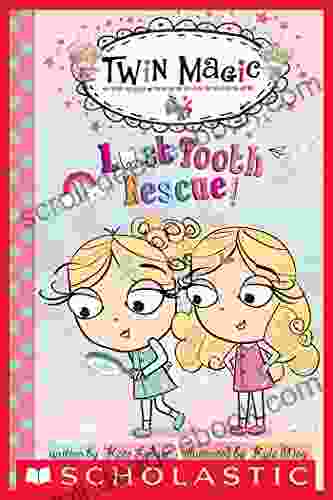
 F. Scott FitzgeraldTwin Magic: Lost Tooth Rescue Scholastic Reader Level 1 (English Article)
F. Scott FitzgeraldTwin Magic: Lost Tooth Rescue Scholastic Reader Level 1 (English Article)
 Samuel BeckettWith Original Illustrations Annotated Classic Edition: A Timeless Literary...
Samuel BeckettWith Original Illustrations Annotated Classic Edition: A Timeless Literary... Nathaniel HawthorneFollow ·13k
Nathaniel HawthorneFollow ·13k Harrison BlairFollow ·9.1k
Harrison BlairFollow ·9.1k Warren BellFollow ·16.1k
Warren BellFollow ·16.1k Greg CoxFollow ·4k
Greg CoxFollow ·4k Blake BellFollow ·16.7k
Blake BellFollow ·16.7k Oscar BellFollow ·19.7k
Oscar BellFollow ·19.7k Neil GaimanFollow ·14.6k
Neil GaimanFollow ·14.6k Camden MitchellFollow ·5.9k
Camden MitchellFollow ·5.9k

 Howard Powell
Howard PowellDk Workbooks Science Third Grade: An In-Depth Exploration...
Science education plays a...
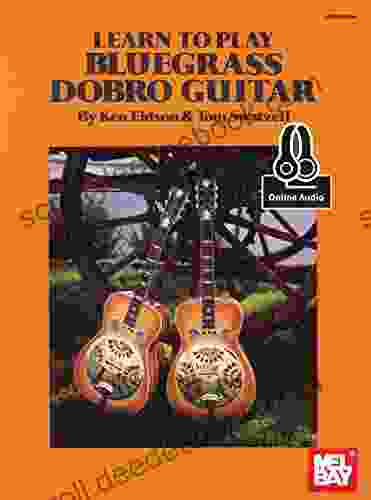
 Everett Bell
Everett BellLearn to Play Bluegrass Dobro Guitar: A Comprehensive...
: Bluegrass Dobro, A Story of...

 Jeffrey Cox
Jeffrey CoxHow the Raccoon Got His Mask
The raccoon, with its...
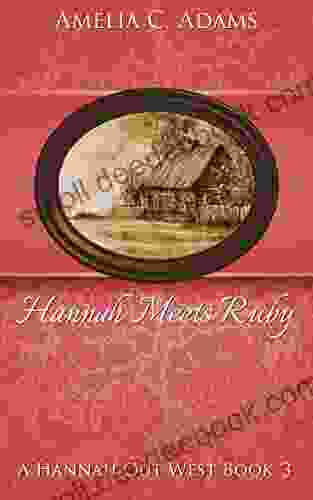
 George Bell
George BellHannah Meets Ruby Hannah Out West: An Adventure-Filled...
Hannah Meets...
5 out of 5
| Language | : | English |
| File size | : | 44342 KB |
| Text-to-Speech | : | Enabled |
| Screen Reader | : | Supported |
| Enhanced typesetting | : | Enabled |
| Word Wise | : | Enabled |
| Print length | : | 449 pages |
| Lending | : | Enabled |



